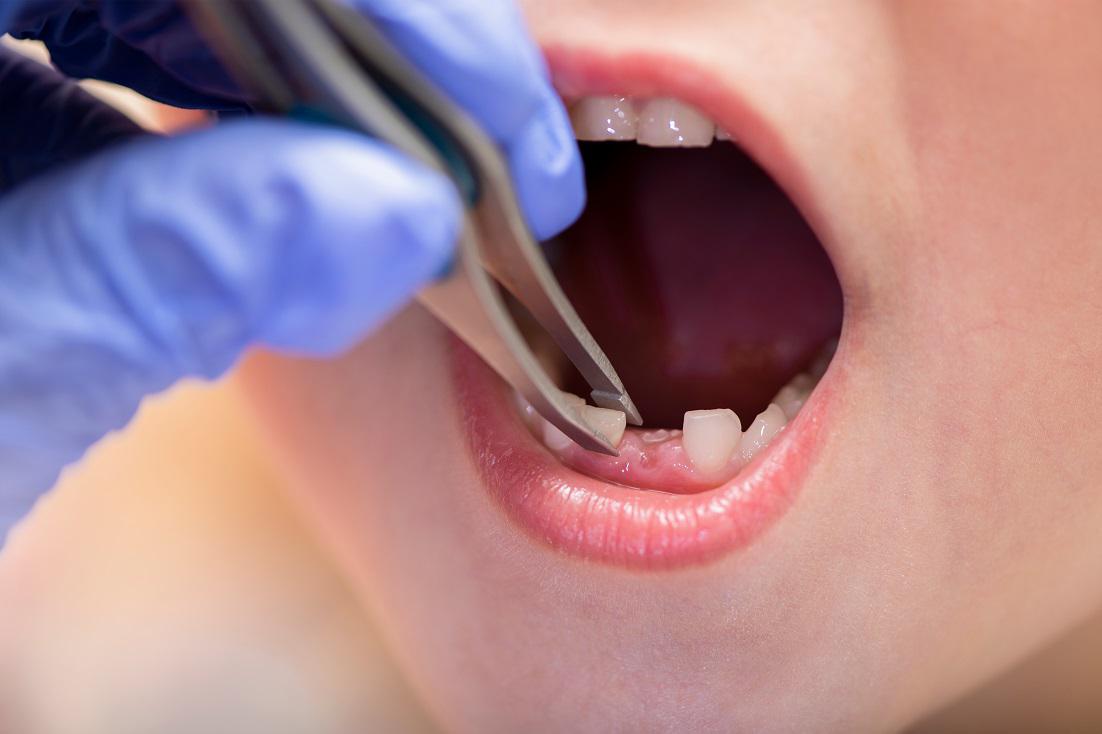Tooth extraction in children is a common dental procedure that many parents may find
concerning. While the thought of your child losing a tooth might be unsettling, it is important to
understand that tooth extractions can be necessary for various reasons and are often in the best
interest of your child’s oral health.
This blog post will explore the causes, treatment, and aftercare associated with childhood tooth
extractions, helping parents navigate the process with confidence and care! And as always, give
us a call if you think your child could be experiencing any symptoms.
Causes of Childhood Tooth Extractions
Tooth extraction is typically seen as a last resort when other dental treatments cannot resolve
the issue. Several factors may lead to the need for tooth extraction in children:
1. Severe Tooth Decay:
Tooth decay is one of the most common reasons for extractions in children. If the decay is
extensive and has affected the tooth’s nerve, extraction may be necessary to prevent the spread
of infection and alleviate pain.
2. Crowded Teeth:
Sometimes, children’s teeth may become overcrowded, especially when adult teeth begin to
emerge before the baby teeth have fallen out. In such cases, a dentist may recommend
extracting one or more baby teeth to make room for the permanent teeth and ensure proper
alignment.
3. Trauma or Injury:
Accidents or injuries that result in a severely damaged tooth may require extraction, especially if
the tooth is cracked, broken, or knocked out of position.
4. Infection or Abscess:
A dental abscess is a painful infection at the root of a tooth or between the tooth and the gum. If
the infection is severe and cannot be treated with antibiotics or root canal therapy, extraction
may be needed to prevent the infection from spreading.
The Tooth Extraction Procedure
Here’s what typically happens during a child’s tooth extraction:
1. Pre-Extraction Assessment:
Before the extraction, a dentist will conduct a thorough examination, which may include X-rays,
to assess the tooth's condition and determine the best approach. We will also discuss the
procedure with you and your child, explaining what to expect and answering any questions you
may have.
2. Anesthesia:
To ensure your child is comfortable during the procedure, the dentist will administer local
anesthesia to numb the area around the tooth. For children who are particularly anxious or if
multiple teeth need to be extracted, the dentist may recommend sedation or general anesthesia,
depending on the complexity of the procedure.
3. Extraction Process:
Once the area is numb, the dentist will carefully remove the tooth. For a simple extraction, where
the tooth is visible above the gum line, the dentist will loosen the tooth using a special
instrument and then gently pull it out. In cases where the tooth is impacted (stuck below the gum
line) or broken, a surgical extraction may be necessary.
4. Post-Extraction Care:
After the tooth is removed, the dentist will place gauze over the extraction site to control
bleeding and help a blood clot form, which is crucial for proper healing. You and your child will
be given detailed aftercare instructions to ensure a smooth recovery.
Aftercare for Tooth Extractions
Here’s what to do after your child’s tooth extraction:
1. Managing Pain and Discomfort:
Your child may experience some discomfort or pain after the anesthesia wears off. Over-the-
counter pain relievers, such as ibuprofen or acetaminophen, can help manage this discomfort. Be
sure to follow the dosage instructions provided by your dentist or pediatrician.
2. Controlling Bleeding:
It’s normal for some bleeding to occur after the extraction. Have your child bite down gently on
the gauze pad provided by the dentist for about 30 minutes to an hour. Avoid excessive spitting
or rinsing, as this can dislodge the blood clot and delay healing.
3. Diet and Hydration:
For the first 24 hours after the extraction, your child should stick to soft, cool foods such as
yogurt, applesauce, mashed potatoes, and ice cream. Avoid hot, spicy, or crunchy foods that
could irritate the extraction site. Encourage your child to drink plenty of fluids, but avoid using
straws.
4. Oral Hygiene:
Maintaining good oral hygiene is crucial, but care should be taken around the extraction site. On
the day of the extraction, avoid brushing near the site. Starting the day after, your child can
resume brushing their teeth, being gentle around the extraction area. Rinsing with a saltwater
solution can help keep the area clean and reduce the risk of infection.
5. Monitoring for Complications:
Keep an eye on your child’s recovery for any signs of complications, such as persistent pain,
swelling, fever, or prolonged bleeding. If you notice any of these symptoms, contact your dentist
immediately. Most children recover quickly, but it’s important to follow up with your dentist to
ensure the extraction site is healing properly.
Conclusion
Tooth extractions in children, while sometimes necessary, are a routine dental procedure that
can significantly benefit your child’s oral health. Understanding the causes, the procedure,
and the proper aftercare can help you and your child feel more comfortable and prepared.
Routine dental visits and proper at-home care are important for ensuring your child’s mouth heals
quickly and effectively, paving the way for a healthy, happy smile!
Curious about your child’s teeth? Call us today to set up a consultation with our trusted team of
dentists!



